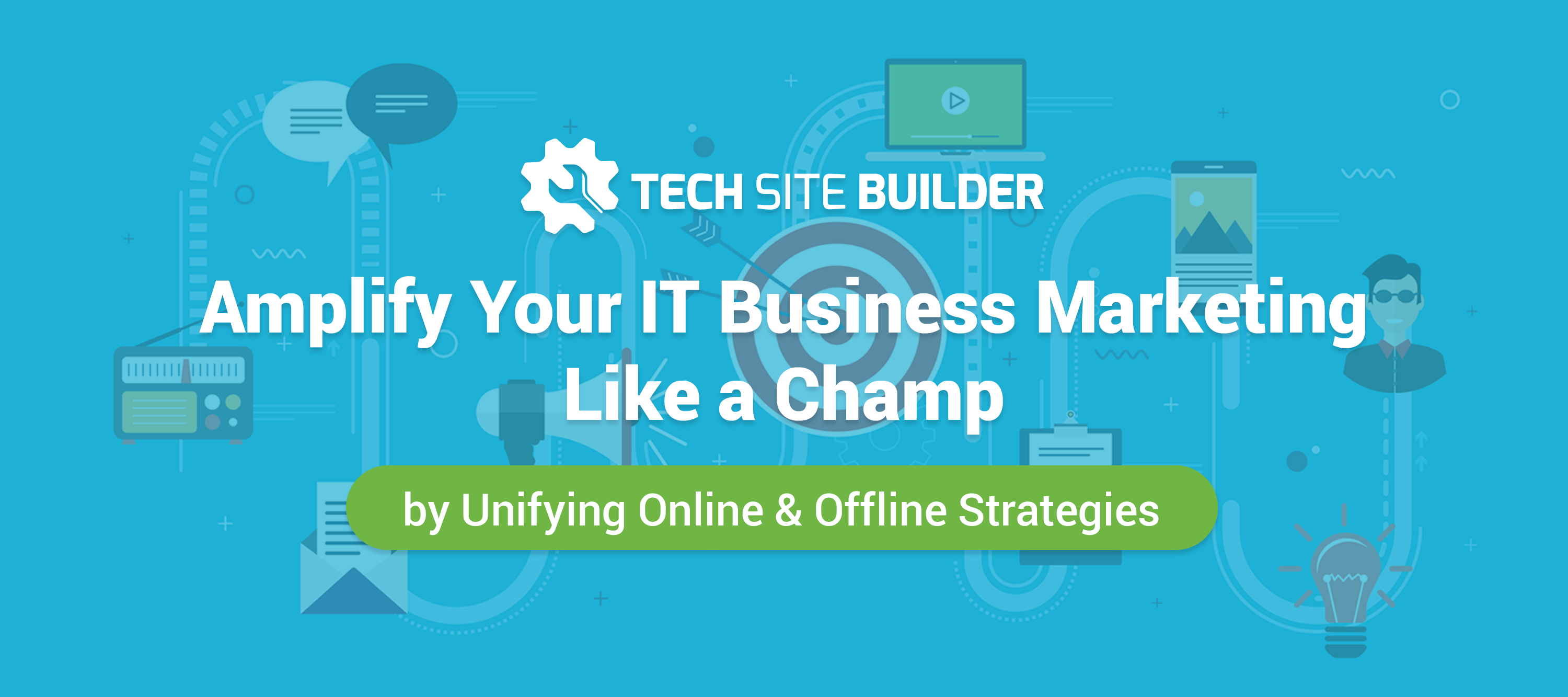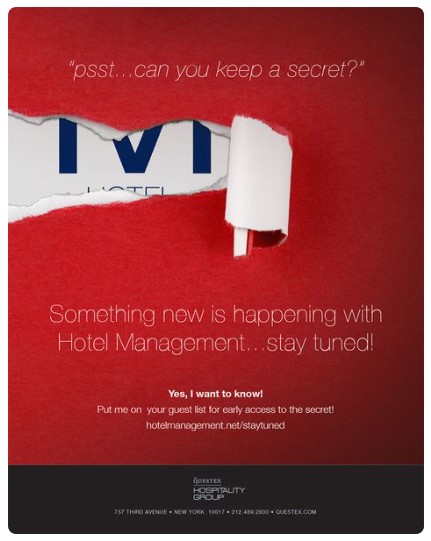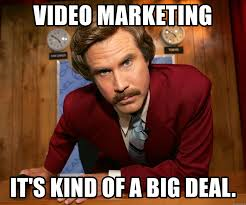 The average IT business owner has multiple options in their marketing toolbox for getting their message out. There’s social media, online advertising, local radio, postcard mailers, and so on. But often these strategies are done in silos without any real integration, which can lead to missed sales opportunities.
The average IT business owner has multiple options in their marketing toolbox for getting their message out. There’s social media, online advertising, local radio, postcard mailers, and so on. But often these strategies are done in silos without any real integration, which can lead to missed sales opportunities.
Consumers are already integrating their shopping habits, which means your message should follow suit. In a survey of 1,500 shoppers of all ages, 83 percent say they use their smartphones while shopping at a physical store.
By combining the power of your offline and online marketing strategies, you can amplify both to get better results and drive more of the types of leads you’re looking for to boost your IT business.
Why Harmonizing Your Sales Message is Important
Not only can the integration of online and offline marketing help you create a cohesive message across your marketing channels, it can also keep you from making major marketing mistakes, like McDonald’s did back in 2012.
Integration Fail
A lack of offline integration was one of the reasons McDonald’s had to stop a major online marketing campaign in its tracks shortly after its big launch.
McDonald’s wanted to encourage followers to tweet out their inspiring stories about experiences at their restaurants using the hashtag #McDStories, but as soon as they launched this online effort, the hashtag was quickly converted to use for McDonald’s horror stories instead.
Had they done an offline connection by explaining more about their concept in stores, for example on their drink cups or bags, perhaps consumers would’ve had more guidance and the effort wouldn’t have gone horribly wrong.
Getting Started with Unifying Your Message
Before we get into tips on how to bring your different marketing channels together, we need to start with the buyer’s journey. Thinking about where your buyers go and what you’d like them to do will give you the road map you need to plug online and offline channels into the mix.
First, begin with understanding what your customers are doing and ask yourself the following questions:
- What is my ideal buyer route? (i.e. Find my IT shop on Google > look at my website > visit or call my shop)
- How do leads initially find you and where do those touchpoints lead them?
- What influences your customers both online and offline (i.e. your store signage, your social media posts)
- When people visit or call your IT shop, how did they first hear about you?
Next, look at your marketing from their perspective by going through your marketing channels with a fresh eye. For example, start from looking at one of your social media posts, click the call to action, where does that land you and does it match the message just clicked on?
Here are some things to consider that can help you provide a more cohesive experience for the consumer:
- Does your messaging match when they move through the marketing chain?
- Are leads being given enough information before being asked to purchase?
- Do you give them a chance to identify their needs in your sales funnel?
- Is a visitor’s online and offline experience with your IT business consistent?
- Do you offer a smooth transition if someone finds you offline and want to purchase online, and vice versa?
Tips for Unifying Your Online & Offline Marketing Worlds
Once you see the power in presenting a unified experience between your offline and online marketing worlds, you’ll realize that it’s actually easier to present an integrated campaign rather than trying to do your marketing piecemeal, a channel at a time.
Here are tips to get you started with a fully integrated marketing plan.
Make Use of Teaser Advertising
Teaser campaigns take advantage of people’s natural curiosity by building anticipation of a particular event. They also offer a perfect way to integrate both offline and online marketing channels.
For example, if you wanted to promote a new mobile device management software that you just became a partner reseller for, you could do it something like this:
- Create your teaser message series and accompanying graphics
- Add a call to action to be “the first to hear the announcement” and give a landing page or email address
- Send those out on postcards
- Put up in store banners
- Advertise on social media
- The day of, use a dedicated landing page as well as in store banners for the announcement
Here’s a great example of a teaser message from the hotel industry.

Use an Online CTA in Offline Campaigns
The Call to Action (CTA) is one of the bedrocks of any good marketing, whether it’s done online or off. By using an online CTA on offline campaigns that directs people to a URL either through text or a QR code you can fluidly integrate the two mediums.
Over 90% of people that read your headline also read your CTA.
A big benefit of driving those offline leads to a specific webpage is that you can more easily track your marketing campaigns and see what’s working. Just make a specific page for each campaign, rather than using your main website pages. This also gives you the ability to create an easy-to-remember URL that may be shorter than your SEO-optimized ones.
Here are some examples of driving offline connections to your online landing page to give them more specific lead-converting info:
- Adding a QR code to a postcard or paper brochure
- Podcast advertising offering a coupon if they visit “yoursite.com/special”
- Adding an online URL to your sales receipt that offers a special deal on a future repair or upgrade
- Pre-loading a desktop link to your Office 365 or Cloud Solutions landing page onto any refurbished PCs you sell
Want to do the reverse?
Here are some examples of driving traffic in the other direction, from online to offline:
- Adding a printable coupon to a webpage to be used “when you bring in your PC”
- Making an offer of an “IT security chat over great coffee… on us!” on a social media post
- Using a CTA with your phone number (You’re probably already doing this one!)
- Offer a way for a visitor to schedule a house call or on-site visit from your website.
Bring Offline Events Online
Do you give Office 365 workshops or trainings for cybersecurity in your IT shop? Expand your reach by also offering an online version of the same class. All it takes is someone to run video and watch for any online comments during your Q&A.
This is a great way to take advantage of Facebook marketing through their live stream video feature and gain more traction on social media. It also means that you can basically offer unlimited seats at your workshop, getting more lead potential from your time and effort.

Here are some eye-opening statistics from Tech Jury related to the benefits of video live steaming:
- 96% of people say they’ve watched an explainer video for a product/service
- 79% of consumers say that a brand’s video convinced them to buy software or apps
- 40% of people say that video increases their chance of a purchase on mobile
- Videos generate 1200% more engagement on social media than text and images
- Over 1 in 5 Facebook videos are Live and watched 3x longer than pre-recorded ones
Create a Mobile App
A great way to marry your online and offline marketing is by offering a mobile app that basically will follow your leads around and be with them pretty much wherever they go.
There’s no denying the power of mobile in today’s retail and sales environment. 79% of smartphone users made a purchase using their phone within the last 6 months.
Through a mobile app, you can do things like:
- Allow coupons to be used on a mobile device at your shop instead of having to be printed out.
- Make it easy for a customer to take a photo of a computer issue and automatically email it to you with a service request.
- Include a store locator with GPS directions to your shop.
- Give customers easy access to reviews about your business or a particular software or hardware.
- Allow guests to take photos of in-store experiences and share them with a click on social media.
88% of consumers doing a local search on their smartphone visit or call that business within 24 hours.
You can also offer advertising on your app from other local businesses, for instance, make it easy for your app users to find a great cup of coffee or bagel nearby.
Use Online-to-Offline (O2O) Commerce
Have you ever ordered something online at Walmart or Home Depot and then went and picked it up in the store later that day? Then you’ve experienced O2O commerce.
It’s a simple, but effective way to offer a consumer the convenience of shopping how they like and making the whole process as time efficient as possible.
You have to wonder why online retail giant Amazon wanted to purchase Whole Foods and get in to the “brick and mortar” business when their online sales are so strong. It’s a testament to the importance of the physical shopping experience and how important it still is, no matter how many gadgets we have.
To take advantage of online-to-offline commerce at your IT business, you could offer the ability to purchase online the following:
- Refurbished computers/devices that can be picked up same day
- Home or office on-site tech support visits
- Managed IT packages
- Memory or other hardware parts and the installation fee
- Fee for computer training classes
Doing Online/Offline Right
In order for your integration of online and offline marketing to work well, there are a few rules of thumb to follow that will ensure you do it right.
Use Consistent Branding
It’s important that you keep your branding consistent across all marketing efforts, whether someone’s on your website or in your shop. That means having your own style guide that dictates the colors, fonts, images, and “voice” that you use in all your marketing.
Whenever you see Lego online or off, you can instantly recognize the brand, and that’s exactly the feel that you’re going for. Find some great tips on branding here.
Use Hashtags Wisely
Hashtags are the new calling card for marketing campaigns these days. From Coca-Cola’s #ShareaCoke to #TweetFromTheSeat by Charmin, hashtags can go viral and get your business noticed if you do them right.
They’re also easy to print on brochures, postcards and flyers to have offline customers take your message online. For your hashtags, you want to:
- Use one that you attach to your business, i.e. #NeedaGeek2Go
- Use them for a specific marketing campaigns, i.e. #FixedMyiPhone
Track Cross Channel Conversions
Knowing how your customers are finding you is vital to understanding what’s working and what’s not in your marketing efforts. If someone comes in your shop, simply ask them how they found you. They could’ve seen you on Twitter through a hashtag you used, and that online to offline lead source is important information to know.
Google Analytics is a great help for tracking your online conversions from a variety of different sources.
It’s All Marketing… So, Don’t Over Think It!
Once you’re more mindful about the connection between your online and offline marketing, planning for both to coincide will come naturally and will give your leads and customers a better experience.
How do you connect online and offline marketing & sales? Let us know in comments!
Speak Your Mind